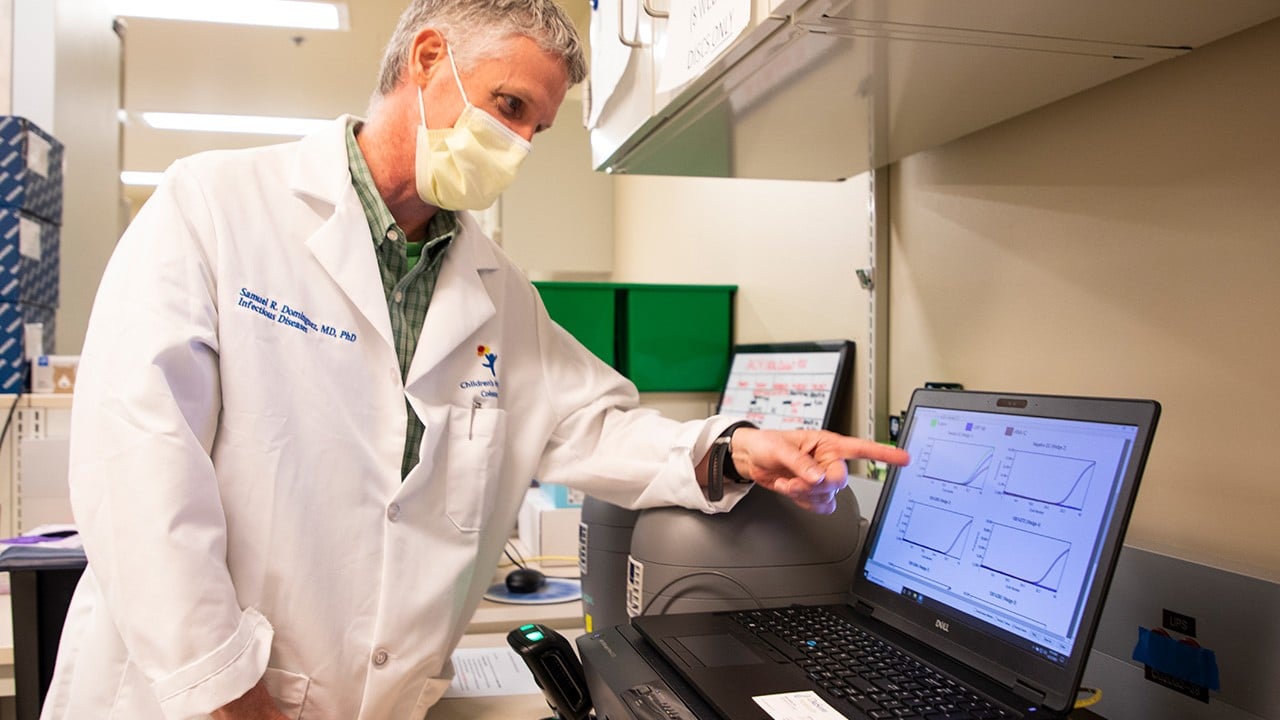Key takeaways
-
Our pediatric infectious disease experts collaborated with state and national public health authorities to develop an early warning system for enterovirus D68 (EV-D68).
-
Detection of an impending regional outbreak of EV-D68 in 2022 enabled our hospital to be fully prepared to accept and expertly treat patients, as well as educate and inform the broader medical community.
-
Our team is working to expand this multimodal surveillance model, which can broadly monitor diseases including rare and severe complications, more common presentations and other emerging pathogens.
-
As part of a national pilot study, our team is currently working to add immunologic surveillance to the model as a next step.
Research study background
Infectious disease experts at Children’s Hospital Colorado are making major strides to improve local and national surveillance and response to enterovirus D68 (EV-D68). The emerging virus can cause respiratory disease similar to asthma, and in rare cases, the polio-like neurologic disease, acute flaccid myelitis (AFM), in children. Widespread testing for EV-D68 is not available and past outbreaks have led to an unexpected surge of emergency department visits and hospital admissions, straining healthcare resources.
The team was the first to recognize a cluster of cases of AFM in Colorado in 2014, prompting further investigation and close collaboration with state and national public health authorities to create new tracking systems. This joint effort led to the development of a novel multimodal surveillance system for EV-D68 and AFM, which used syndromic and clinical laboratory surveillance for accurate and rapid detection of a regional, and subsequently national, outbreak of EV-D68 in 2022. Partnering with the Colorado Department of Public Health and Environment and the Centers for Disease Control and Prevention, the team assisted with local and national health alerts, as well as outreach and education for medical providers. This collaborative effort enhanced preparedness for healthcare providers, including surge planning and improved case recognition and clinical management.
“Our team at Children’s Colorado is one of the few in the country that has persisted in tracking and investigating EV-D68, providing some of the key knowledge on the disease and improving our diagnosis, treatment and prevention strategies.”
Kevin Messacar, MD, PhD
When retrospective wastewater surveillance was conducted after the outbreak, EV-D68 was detected up to two weeks before the syndromic surveillance alarm. If performed in real-time, wastewater detection could serve as the earliest warning of community circulation and potentially expand to include other pathogens in the future.
This multimodal approach can monitor disease presentations ranging from rare and severe complications to more common ones, track circulation and population immunity and serve as a model for other emerging pathogens. The team is currently in the early stages of extending their work to other viruses.
Clinical implications
During the 2022 EV-D68 epidemic, AFM was only detected in a few cases, representing the first time the circulating virus decoupled with paralysis cases. The team is conducting ongoing investigations to understand the virologic, immunologic and epidemiologic factors contributing to the decoupling.
In addition, as part of a national pilot study led by Dr. Messacar, the team is working with the National Institutes of Allergy and Infectious Diseases to incorporate immunologic surveillance into the model. This will help researchers better understand past exposure and predict future circulation, with the ultimate goal of informing and accelerating the development of treatments and immunizations for EV-D68.
Featured researchers

Samuel Dominguez, MD, PhD
Pediatric infectious disease specialist
Pediatric Infectious Disease Program
Children's Hospital Colorado
Professor
Pediatrics-Infectious Diseases
University of Colorado School of Medicine

Kevin Messacar, MD, PhD
Pediatric infectious disease specialist
Pediatric Infectious Disease Program
Children's Hospital Colorado
Associate professor
Pediatrics-Infectious Diseases
University of Colorado School of Medicine

Hai Nguyen-Tran, MD
Pediatric infectious disease specialist
Pediatric Infectious Disease Program
Children’s Hospital Colorado
Assistant professor
Pediatrics – Infectious Diseases
University of Colorado School of Medicine





 720-777-0123
720-777-0123










